|
(The following article was translated into English by artificial intelligence.)
Winter landscape of Yangdong Village... Thatch and straw matting
Yangdong Village in Gyeongju is where two prominent families, the Sons and the Lees, have lived for generations, preserving tradition. There are several large traditional houses in the village. Upon entering the village, you can see tiled and thatched-roof houses on high and low ground. But that's not all. In reality, the village is much larger with more houses, but they are hidden behind the mountain ridges. Including pavilions and academies, there are approximately 165 buildings in the village. From the village entrance, you can see nearby mountains, rivers, and plains.
On the day the reporting team visited, quite a lot of straw was piled up in the flatlands. Workers were using machines to weave straw matting. Every winter, the villagers replace the old matting with new ones made of thatch. While exploring the village, we noticed stacks of straw mats of different shapes from what we had seen on the flatlands. They looked sturdier and were woven in a way that could be placed on the eaves or walls. It is said that this replacement process continues until around the Lunar New Year holiday.
Neat and tidy houses
In Yangdong Village, many houses and pavilions are designated cultural assets. As these are residences, the access for regular visitors might be limited. The reporting team coordinated interviews and visits with some individual homeowners in advance within the permitted areas. During the visit, we listened to explanations from resident guides, individual homeowners, and the chairman of the Yangdong Village Operating Committee.
In Yangdong Village, residents who have undergone their own education serve as guides (in Korean). We first visited the designated treasure house, Gwanga-jeong Pavilion. According to the guidepost, it was the residence of Son Jung-don (1463-1529) during the Joseon Dynasty, and Gwanga-jeong means 'viewing the fields where grains grow.' As we passed the entrance, a neatly arranged courtyard and a spacious main hall came into view. Classical music filled the space, blending with the refined image of the traditional house, making it even more majestic. From the elevated platform, we could see the nearby river and the scenery of the lower village at a glance. Gwanga-jeong Pavilion felt like a cultural space where one could appreciate the scenery and explore various aspects of the house.
Songcheom (National Folk Cultural Heritage) is a large family home of the Sons in Yangdong Village, built by Son So (1433-1484), who was an important figure in the village. Son So was the father of Son Jung-don. Upon entering the house and looking to the right, a fragrant tree with abundant branches stands. Known as the 'Yangdong Fragrant Tree,' it is said to be over 500 years old. Visitors' attention was drawn to the fragrant tree, while on the left, sturdy stone pillars were visible. Walking further, we found well-arranged stone platforms at the back.
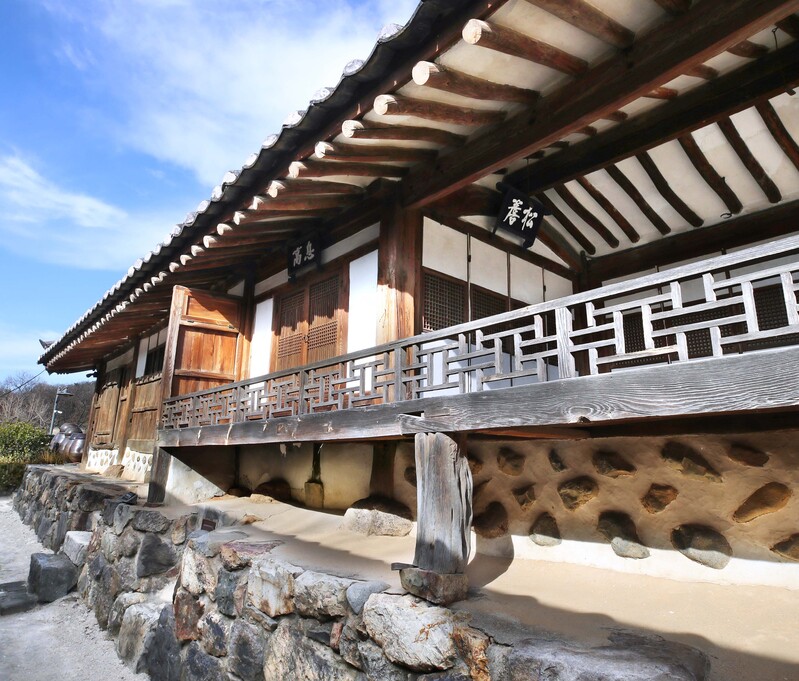 |
Living Heritage with Long History
As one wanders through Yangdong Village, the scenery changes depending on the location. The ambiance of gazing at the opposite traditional houses varied amidst serene surroundings. The common thread among these houses is that they are still inhabited in modern times. Son Sung-hoon (the 19th descendant of Son Jung-don), who welcomed the reporting team at the ancestral home, said, "To convey that people live in this house with a rich history, we play music." Lee Ji-rak, residing in Mucheomdang (the 17th descendant of Lee Eon-jeok), stated, "This place has been a living space where descendants have lived for over 600 years, it's a home for people." Lee Ji-gwan, the operating committee chairman of Yangdong Village who guided us around the village, described it as "a living heritage rather than a preserved one."
We also visited the treasure, Mucheomdang, which is the main shrine of the Eon-jeok lineage. It was the residence of Yi Beon (1463-1500), the father of Yi Eon-jeok, who married into the Son family and settled in Yangdong Village. A plaque hangs on the main wall with the inscription '左海琴書' (meaning a village where scholars reside in Yeongnam). It was written by King Sejo. From the neat Mucheomdang veranda, the view of nature was different. As the sun was setting, a flock of magpies were moving between the persimmon tree with remaining fruits and the zelkova trees.
We then headed to another treasure, the Hyangdan. From the entrance, it seemed like various spaces of the house were interconnected, but with the residents' cooperation, we explored inside and felt a sense of dimensionality and openness. The space between the upper and lower quarters had a considerable depth, and the stone pillars supporting the main hall looked sturdy. The square-shaped courtyard caught our attention with its intricate and unique impression. Looking at the Hyangdan from the entrance of Yangdong Village, the multi-tiered and elaborate exterior of the house stood out.
Honoring the Confucian scholar, Yi Eon-jeok, the Oksanseowon was established to commemorate him, born in Yangdong Village. His scholarship is known to have continued from Toegye Yi Hwang. According to the sign at Oksanseowon, it was established in 1572 by Jeon Jae-min, a local magistrate, following the wishes of the provincial governor. It became a Seowon (Confucian academy) during the Joseon Dynasty.
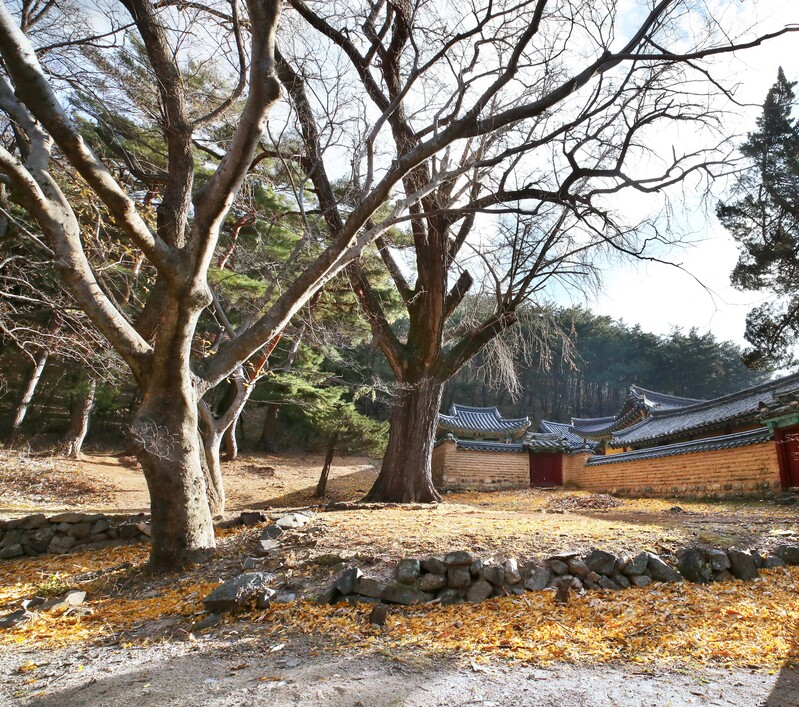 |
Oksanseowon is one of the nine Seowons grouped as "Korean Seowons" and inscribed as a UNESCO World Heritage Site in 2019. Seowons are usually divided into areas for education, study, and memorial services. Passing through the main gate of Oksanseowon, we encountered Mubyeonru, designated as a treasure in 2022. The lower floor serves as an entrance, while the upper floor features a spacious main hall with views of the entrance gate and the outside scenery. Mubyeonru means an endless pavilion. It's the first building in Korean Seowon architecture to adopt the upper-floor style.
Beyond Mubyeonru are dormitories on both sides and further ahead is the study hall, Guindang. At the back lies the memorial area, Cheonmyo. As the Oksanseowon committee explained the history and buildings to the reporting team, a group of visitors arrived. The visitors listened attentively to the ongoing explanation. Lee Ji-seong, the chairman of the Oksanseowon committee, said, "We continue to preserve the Seowon in modern times."
Jungheosa Pagoda
After leaving Oksanseowon and taking another look at the buildings and landscapes, we headed to the location where the Jungheosa 13-story stone pagoda, a national treasure, is located. It's just a short drive away. Upon arrival, only the stone pagoda stands alone in the Jungheosa site. Two elderly visitors were closely examining the pagoda.
The Jungheosa 13-story stone pagoda is rare as it's believed to have been built during the Unified Silla period and has 13 stories. We counted each story as we climbed up, noticing the size decreasing sharply as we went up. Then our gaze was caught by the blue sky with drifting clouds. The stone pagoda against the backdrop of the sky and majestic trees blended quite well with the surrounding nature.
After visiting Yangdong Village, Oksanseowon, and Jungheosa 13-story stone pagoda, I felt that I had glimpsed the cultural heritage where people and nature coexist.
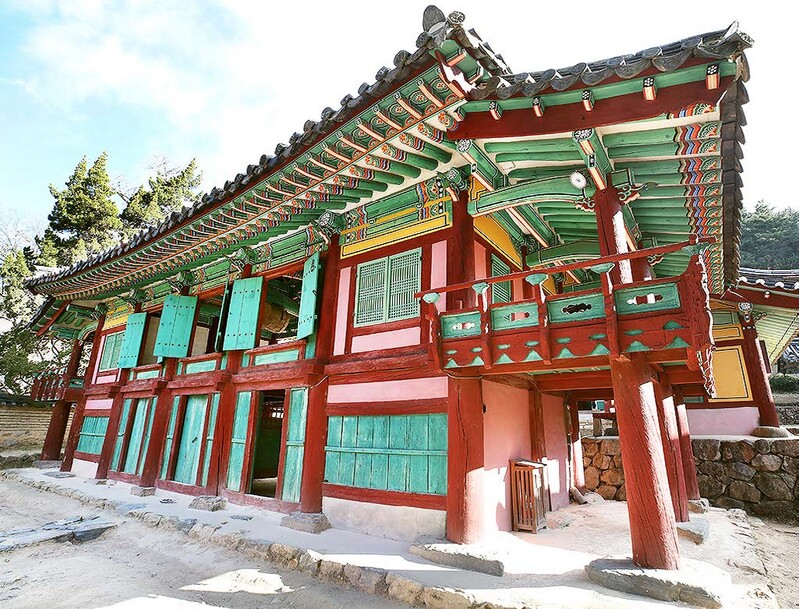 |
(C) Yonhap News Agency. All Rights Reserved

















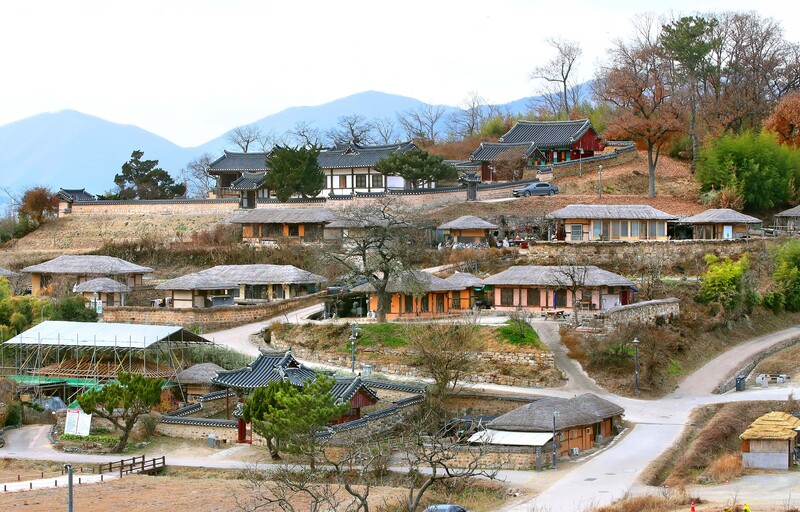

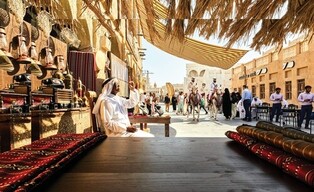





![[가요소식] 보이넥스트도어, 신보로 3연속 밀리언셀러 달성](/news/data/20251025/yna1065624915905018_166_h2.jpg)









